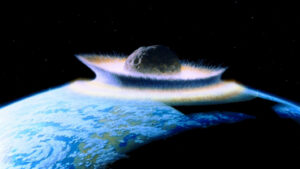Unexpected twists and an unfinished story

Plate tectonics might seem like a routine topic from a 7th grade textbook, but in the 1970s, plate tectonics was cutting-edge science. The theory had only gained widespread acceptance over the previous ten years and subsequently attracted scads of scientists looking to open up new intellectual frontiers. Walter Alvarez was one of them, but his research into plate tectonics was destined to be sidelined. An intriguing observation would eventually lead him, his collaborators, and the rest of science on an intellectual journey across geology, chemistry, paleontology, and atmospheric science — towards solving one of the great mysteries in Earth’s history: What happened to the dinosaurs?

This case study highlights these aspects of the nature of science:
- Science can test hypotheses about events that happened long ago.
- Scientific ideas are tested with multiple lines of evidence.
- Science relies on communication within a diverse scientific community.
- The process of science is non-linear, unpredictable, and ongoing.
- Science often investigates problems that require collaboration from those in many different disciplines.
ARE DINOSAURS REALLY EXTINCT?
Well, most dinosaurs are. But one lineage of dinosaurs survived the KT extinction and might be fluttering outside your window at this moment: birds! Many separate lines of evidence suggest that modern birds are a branch off the dinosaur family tree — they’re closely related to T. rex — which technically makes them dinosaurs. So the “dinosaur extinction” really refers to the 65-million-year-old extinction event that killed off all dinosaurs except birds.
Throughout this story, we’ll trace the path through the process of science that scientists took in their investigation. To review this process, visit The real process of science.
Use this story to introduce your students to the Science Flowchart. Check out the middle school or high school version of the activity.
Students can also review the story using this video.
